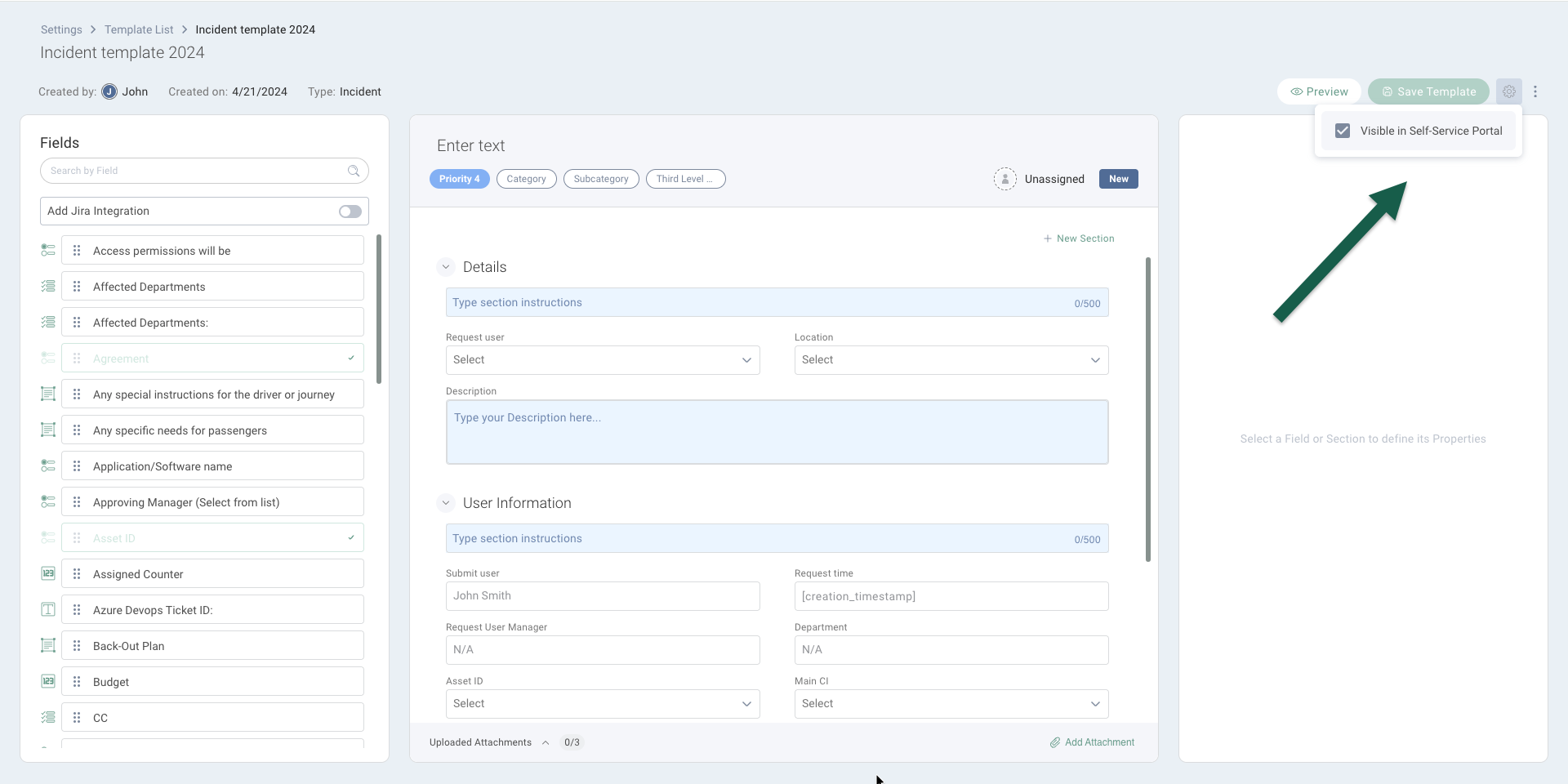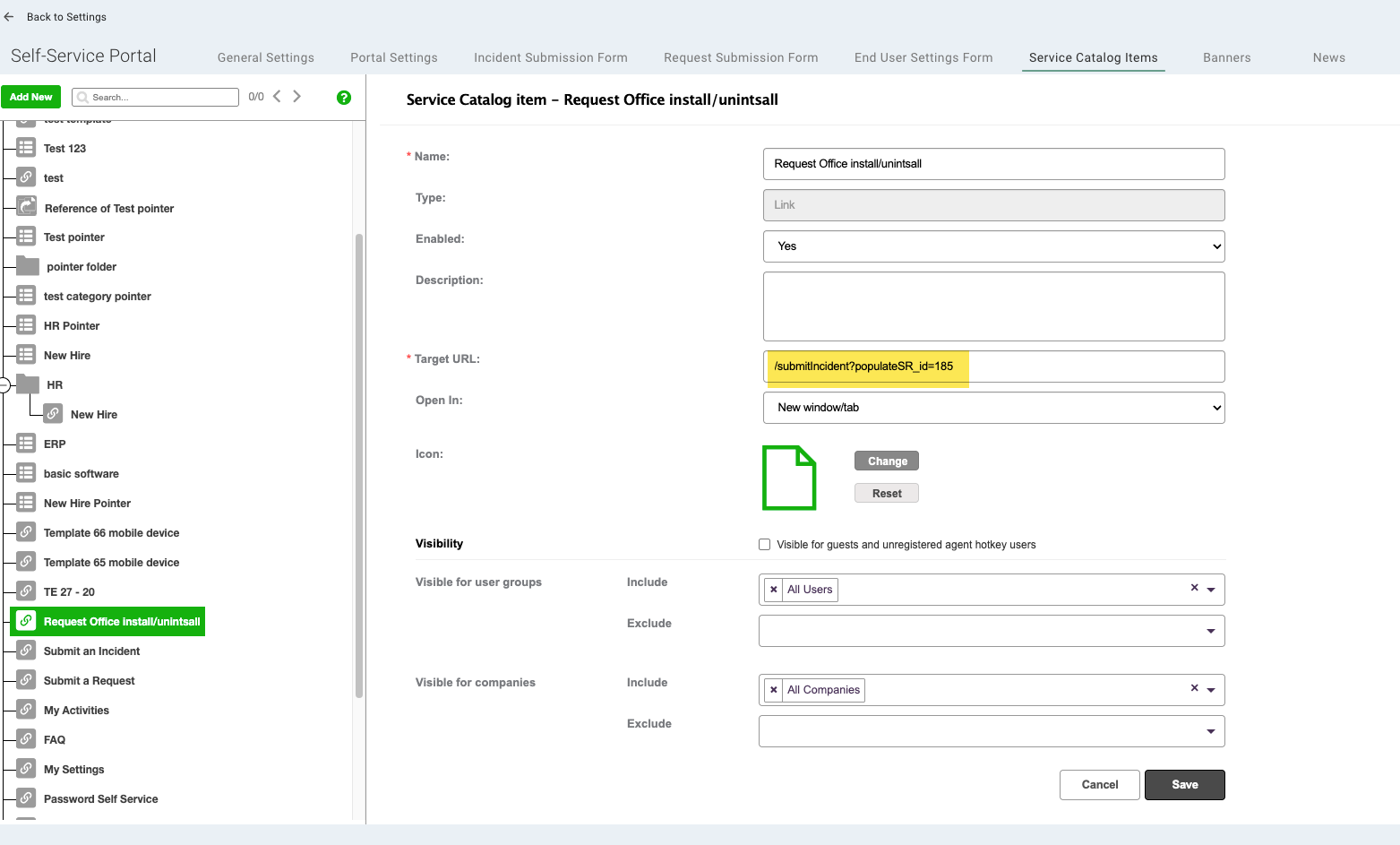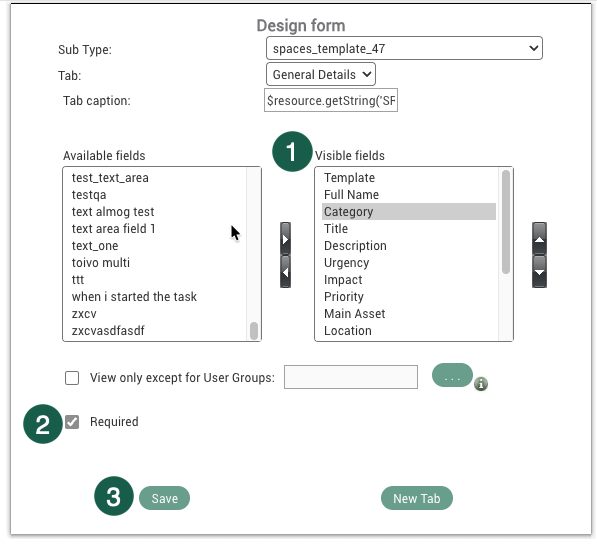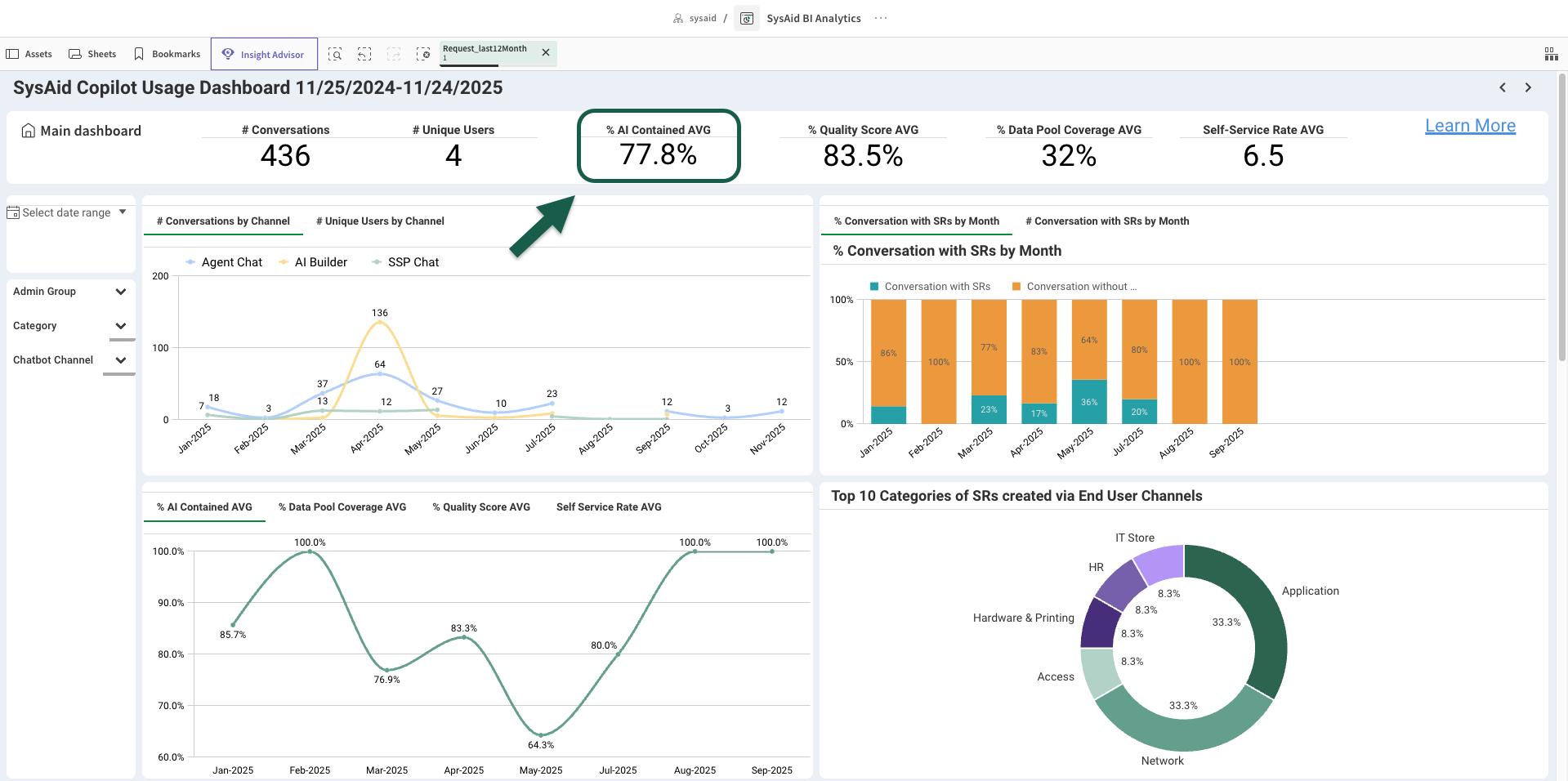SysAid’s Conversational Ticketing feature allows end users to create new service records directly through a natural chat with the AI End User Chatbot.
Users simply describe their issue in their own words, and the chatbot automatically creates a service record based on the most relevant template.
How it works
When a user initiates service record creation through the chatbot, the chatbot analyzes the message, identifies the correct service record type (incident or request), and selects the most suitable template from the set of templates available to the end users.
The chatbot then fills the necessary details from the conversation into the service record. If any required details are missing, the chatbot will ask the user to provide the missing information. Once all relevant information has been shared, the service record will be automatically submitted by the chatbot.
At any point after the service record was submitted, the user has the option to resolve the service record and change its status to Closed - AI.
Please note:
If the user clicks Create a service record in the middle of the conversation, the chatbot will immediately open a service record without the conversational ticketing feature. This means the chatbot will only fill in the ‘title’, ‘description’, categories, and status.
Setting up templates for Conversational Ticketing
To make sure the necessary templates are available for your end users in the correct way, please follow the instructions below:
1. Set templates as visible to end users
For a template to be available for Conversational Ticketing, it must first be visible to users in the Self-Service Portal. To do so:
Go to Settings > Templates & Fields > Ticket Templates & Workflows.
Select the relevant template.
Click the cog icon in the top right corner and check the Visible in Self-Service Portal checkbox.

2. Make templates available for Conversational Ticketing
In addition to being visible in the Self Service Portal, the template must meet at least one of the following conditions:
The template is assigned as a default incident or request template for a category
To set a template as the default for a category:
Go to Settings > Categories > Manage Categories.
Filter by Incident Templates or Request Templates.
Make sure the template is set as the default template for at least one category - Incident or Request.

OR
The template is linked through a Service Catalog item in the Self Service Portal
To link a template as a Service Catalog item:
Go to Self-Service Portal > Service Catalog Items.
Open the relevant catalog item.
Verify that the Target URL includes the template ID (this links the catalog item to the desired template).
Example:
185 is the template ID
3. Set mandatory template fields
Please note:
The chatbot will ask the user for information only for the required fields. It will not fill in the optional fields.
Relational lists and multi-relational lists are not supported as required fields in Conversational Ticketing.
To ensure the chatbot can properly interpret and use your template’s fields during Conversational Ticketing, fields must be visible and required for the end user on the submission form:
Go to Settings > Self-Service Portal > Incident Submission Form or Request Submission Form.
Select the relevant template from the Template drop-down menu.
Click Design Form in the top right corner.
For each field you want included in the chatbot conversation, make sure it’s set as visible and required.

Click Save.
Service Record resolution
Until the service record gets resolved, its Unresolved status will be indicated in the chat history panel on the left in the “Unresolved” section (a link to the relevant Chatbot thread)
If the user clicks Mark issue as resolved, the service record status changes to Closed - AI and will be counted as AI Contained in the AI Usage Dashboard.

Tip!
To learn more about the AI Usage Dashboard, see SysAid Copilot Usage Dashboard Overview.
Best practices
To make sure SysAid Copilot uses the most accurate templates for a service record:
Use clear and unique names for each template. This helps the chatbot more accurately identify which template to use when creating a ticket.
Choose precise categories for your templates. The more specific your category and template naming, the better Conversational Ticketing can match user requests to the right template.